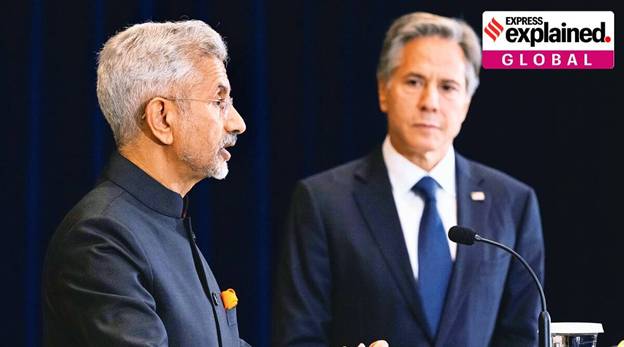Free Courses Sale ends Soon, Get It Now


Free Courses Sale ends Soon, Get It Now



Copyright infringement not intended
Context:
With United States Secretary of State Antony J Blinken by his side, External Affairs Minister S Jaishankar declared, “I am very bullish about the [Indo-US] relationship.” Only the previous day, Jaishankar had remarked that the US decision to provide a $450-million sustenance package for Pakistan’s aging F-16 fleet was “not fooling anybody”.
Details:
© 2024 iasgyan. All right reserved